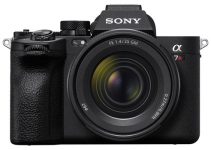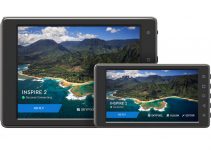Producing astounding hyper-lapse videos can be extremely beneficial for any production, especially if you want to take your commercial work to the next level or just make your personal project stand out from the crowd. Shooting a hyper lapse can be a little bit daunting, though, so knowing the ins and outs of the process is a mandatory premise for success.
Rob and Jonas the creators of Rob & Jonas’ Filmmaking Tips have put together an excellent hyper lapse guide that covers everything one need to know about the process by revealing some of the basics of their personal workflow. In the video tutorial ahead the filmmakers not only show how they capture still images for the hyper-lapse sequences but also include a section revealing how to process these raw files in Lightroom and After Effects.
All in all, this technique is much like the moving time-lapse on a slider, except the camera moves over a much larger area, yet you need to follow a few simple rules to make this work for you. First, pick a solid, stable tripod. Flimsy tripods tend to shake slightly, even with a small amount of wind, causing a jitter in the final video so keep that in mind.
Set your camera settings accordingly and compose your shot. Use a Remote Trigger if required. Then by moving with one foot further try to maintain the framing of the shot roughly the same as the former one by using one or more of the focus points that you see in the camera’s viewfinder as a reference.
Make sure that you are using the manual settings on your camera and you’re shooting in Raw for greater control over the images later in post. Typically, you’ll want to lock the ISO, white balance, focus and exposure settings on the camera. Further, if you want to add motion blur to your hyper-lapse video to make the movement look more natural your shutter speed needs to be approximately double the number of frames per second of your final clip. Besides these recommendations, follow the conventional rules for shooting a time-lapse video.
Once you download the images to your computer you can open them in Lightroom for further processing. Pick a random image in the middle of the hyper-lapse sequence and adjust its settings accordingly. Set the correct White Balance, adjust the Clarity and contrast settings or add a Gradient filter if needed.
There are many directions you can go at this stage of the process so let your creative imagination be your guide. Once the colour correction of your image is completed, synchronize all the rest of the images in your sequence by copying and pasting the same effects.
Finally, export all colour graded stills as Jpeg files or choose any other format that is compatible with After Effects or the NLE that you tend to use. In case, you choose to process your sequence in After Effects, create a new sequence and after importing the files re-frame your shot. A mandatory step in the process is to apply some sort of image stabilization, so using the Warp Stabilizer is a great place to start.
Once the process is completed you can export the shot and continue further. Alternatively, if you still have jittering artefacts in your footage you can use the ReelSteady, a dedicated plugin for stabilization that should deliver even better results than the Warp Stabilizer. You can experiment with this technique and see what works best for smoothing out and polishing your footage.
[source: Rob & Jonas’ Filmmaking Tips]
Disclaimer: As an Amazon Associate partner and participant in B&H and Adorama Affiliate programmes, we earn a small comission from each purchase made through the affiliate links listed above at no additional cost to you.



